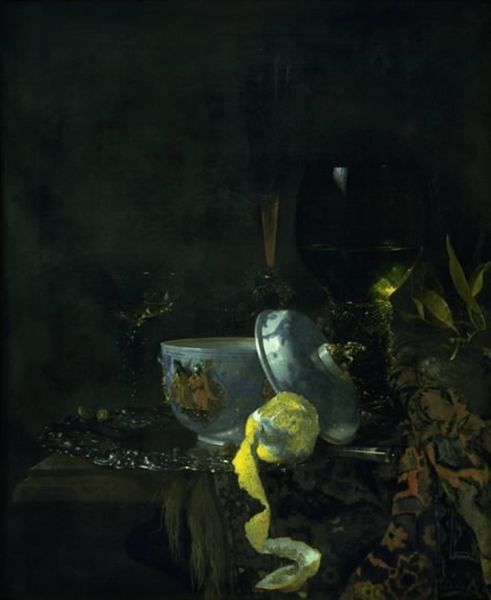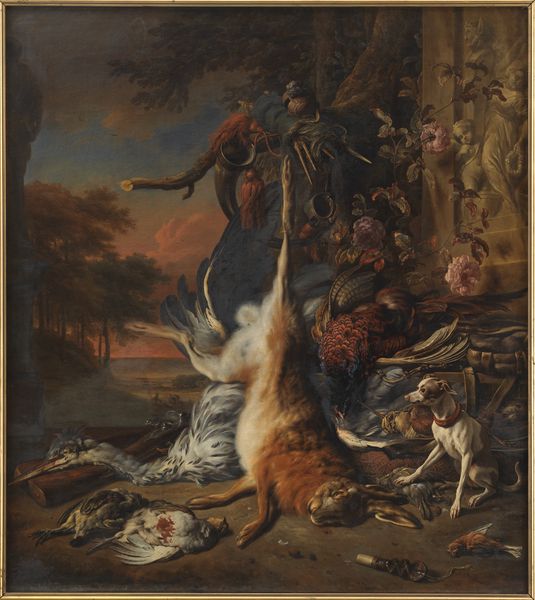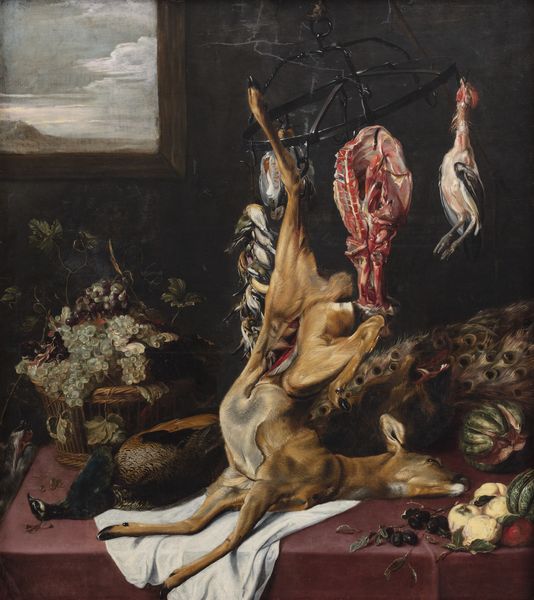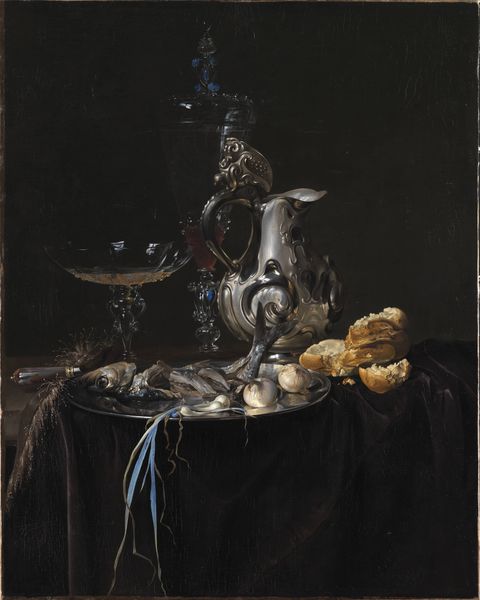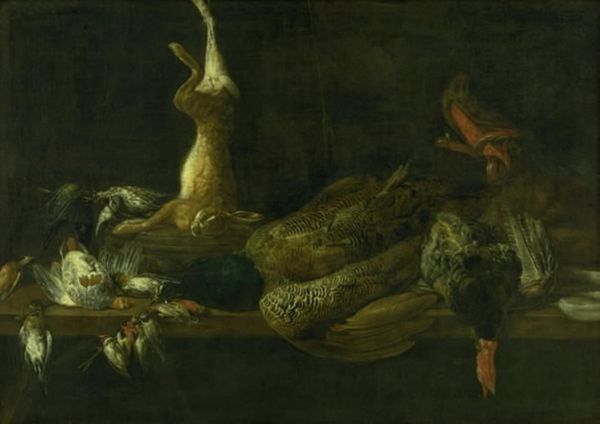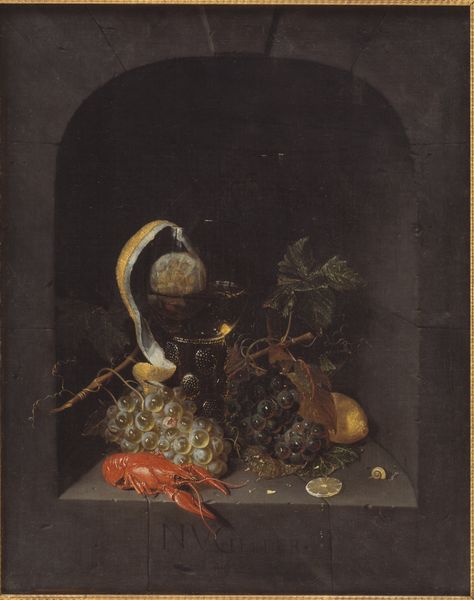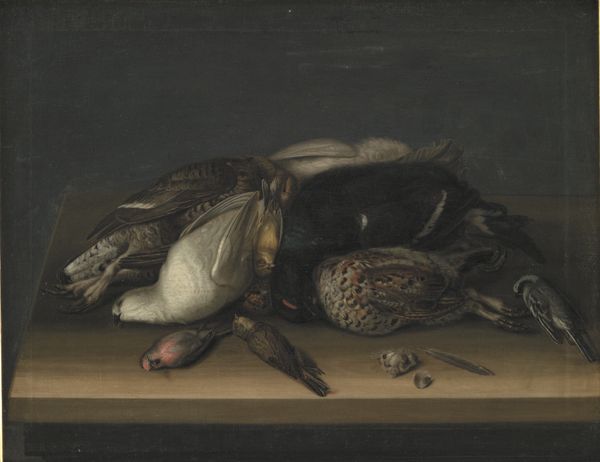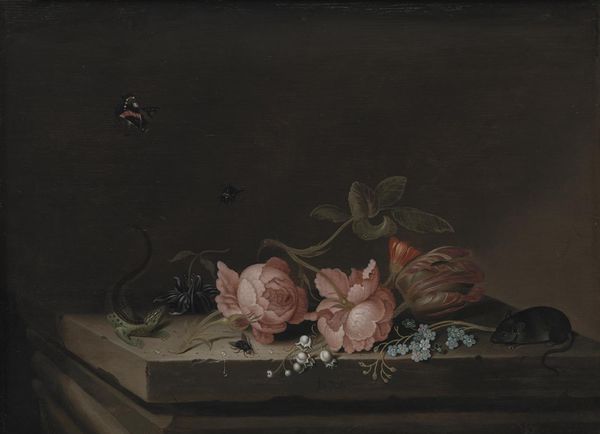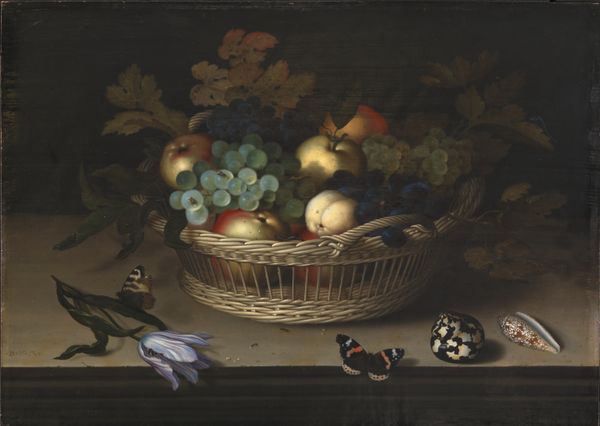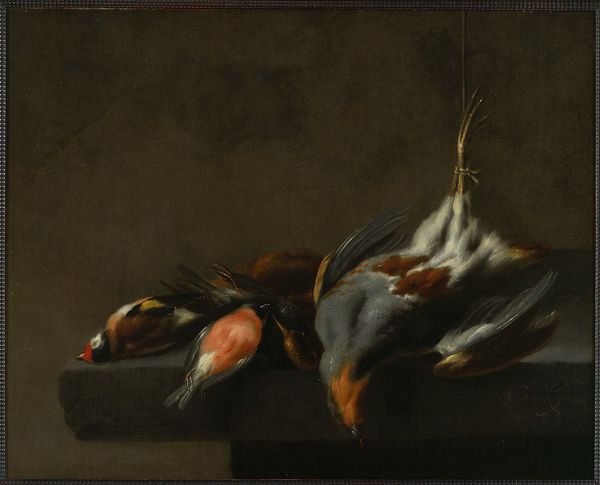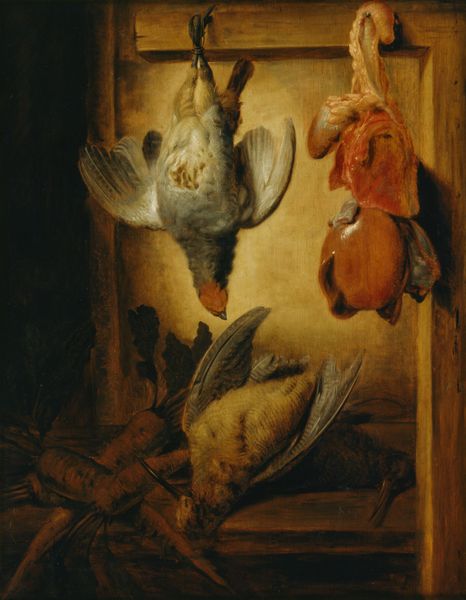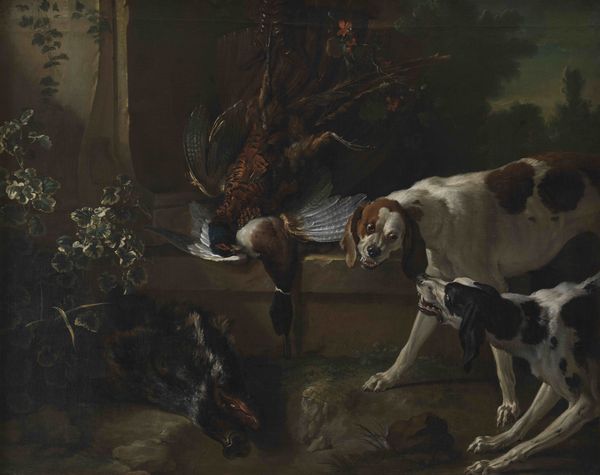
oil-paint, wood
#
dutch-golden-age
#
oil-paint
#
wood
#
genre-painting
Dimensions: 79 cm (height) x 66.5 cm (width) (Netto)
Curator: Oh, my goodness. My first thought? Drama! Just pure, unadulterated theatricality in browns and greys. What a moody piece! Editor: Indeed. We are standing before Salomon van Ruysdael's "Still Life of Dead Game," created in 1662. This oil on wood panel is a fascinating example of Dutch Golden Age painting. Curator: "Dead Game" feels so...understated for the vibe! I mean, you've got this majestic, almost defiant rabbit standing amongst a collection of birds... It feels like a power struggle, a story frozen in time. The way it’s lit makes the scene both gruesome and gorgeous at once, doesn't it? Editor: Absolutely. This was a time of enormous social and economic change in the Netherlands. The rise of the merchant class led to a demand for secular art that showcased their wealth and status. So these seemingly straightforward hunting scenes can actually be interpreted as assertions of power and dominion over nature, performed by and for a wealthy male class. The painting, as you observe, stages the animal as trophies and emblems of abundance and prestige. Curator: Trophies...Yes, it does smack of entitlement. But, zooming in, those little details, the almost luminous quality of the feathers... that's a quiet, painterly obsession. Almost feels like a way of reclaiming dignity amidst the dominance. I imagine Van Ruysdael was interested in rendering death with… what is it... tenderness. It looks as if there's also some kind of strange interaction taking place between the ivy crawling at the corner and one bird that’s just hanging off the ledge—as though caught, and just barely escaping its fall. Editor: Fascinating! Consider how ideas of status are entangled with the act of representing these hunted animals. Also, it reflects broader anxieties and shifting societal roles within a colonial context where this new class made displays of dominance over living beings—as much as non-Western subjects. The genre itself carries inherent messages of power. I agree with your observations though—that one can appreciate the remarkable skills required to produce a hyperrealistic rendition in ways that may offer a unique dignity to the subjects, disrupting the brutal themes, if only slightly. Curator: Hmmm. Well, whatever my interpretations are, it gives you a lot to ponder. These guys were quite accomplished. I won’t go shooting, that’s for sure. I think I’ll stick to admiring such art in museums from now on! Editor: Yes, reflecting on the painting—its craft, context, and enduring messages about value—perhaps art like this can promote critical reflection on contemporary ideas about social identity, dominance, and display.
Comments
No comments
Be the first to comment and join the conversation on the ultimate creative platform.
